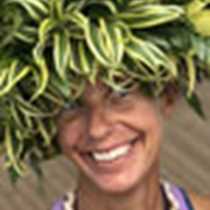Woodfjorden
This morning we awoke aboard National Geographic Explorer off the northern coast of Spitsbergen Island with fin whales alongside the ship. While fin whales are not uncommon in this area it is rare to see a mother and calf as it remains one of the great mysteries of where baby fin whales are born.
After parting ways with the huge baleen feeders we poked our bow south into the mouth of Woodfjorden where we were soon rewarded with our first polar bear of the day. The bear was on land and walking along the tundra, stuck out nicely against the red Devonian sandstone. Eventually it decided to take to the water and we had a wonderful look at Ursus maritimus, the maritime bear, in its element. Further on down the fjord we found more bears on retreating land fast ice, the platform from which they hunt and travel. With so many seals scattered amongst the ice we wondered which of these bears would succeed in the hunt in this tough and challenging world of predator-prey. At one point we saw a bearded seal hauled out on the ice close to a sow and cub, and it was such a great portrayal of how large bearded seals are (up to 800 pounds) in comparison to female polar bears.
After lunch we dropped the Zodiacs and explored the Andoyane (duck) Islands. Common eiders scattered throughout helped to tell the story of the naming of the islands and the reason the Russian pomors were drawn here, to collect eider down. A polar bear was soon spotted crossing the nearby island and that was but a reminder how the eiders provide not only down for duvets but eggs for Ursus maritimus. Arctic terns were obviously a part of the egg scramble as you could see them diving at the bear as it traversed the island. Red phalaropes, purple sandpipers and red throated divers (loons) were also seen as we circumnavigated the island.
After dinner the day was made complete at Moffen Island in the company of walrus swimming in the water and hauled out on the flat island. Another great day in the Arctic as we reached latitude 80!




